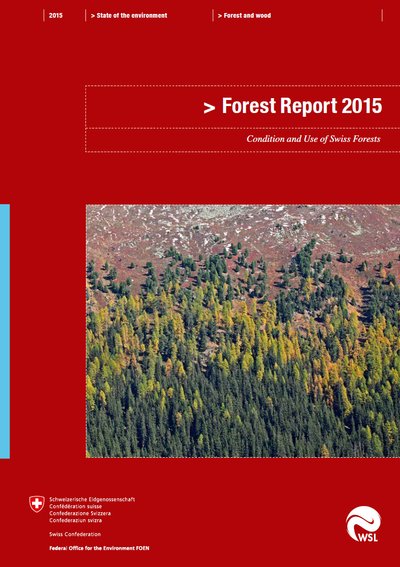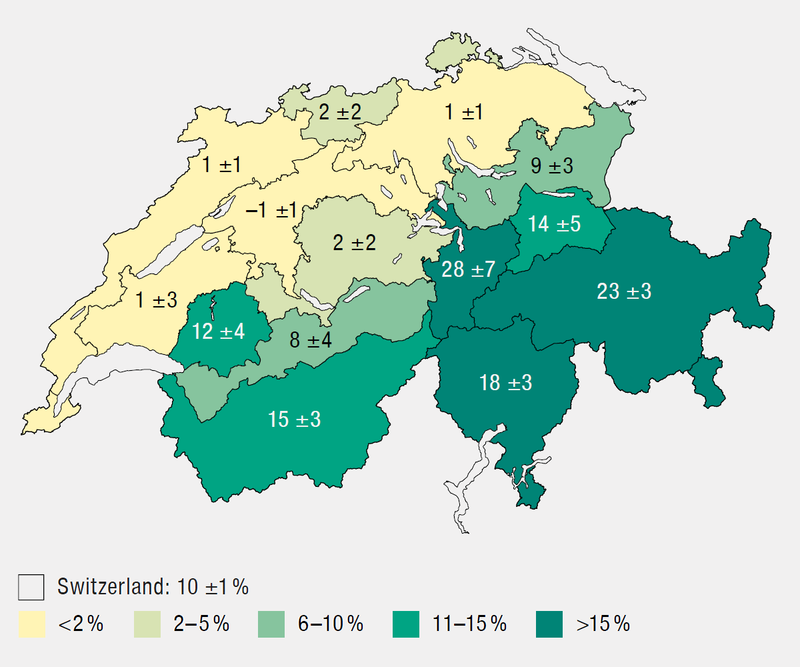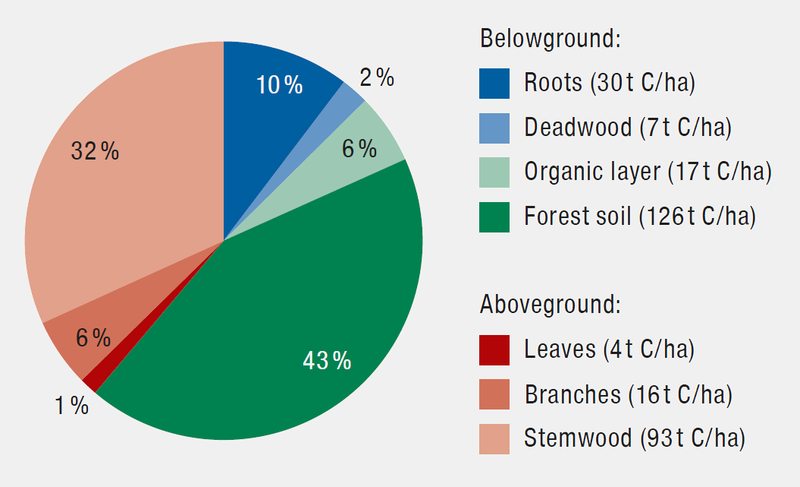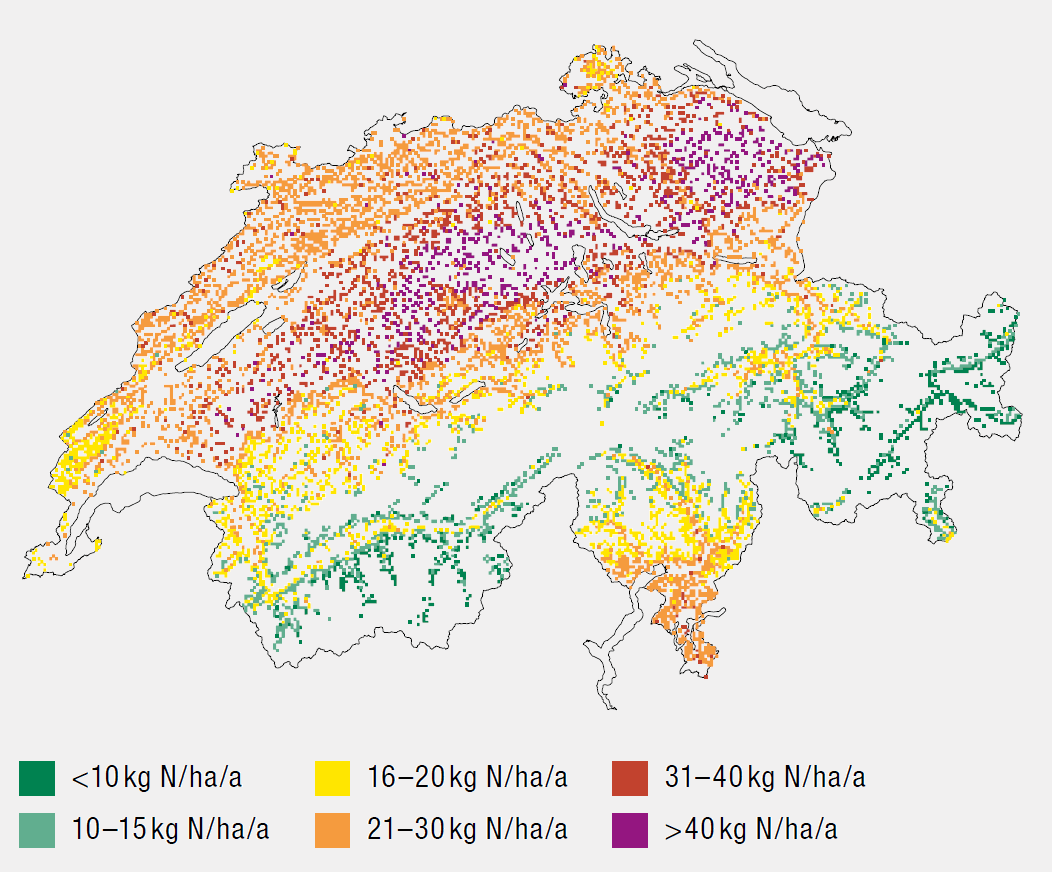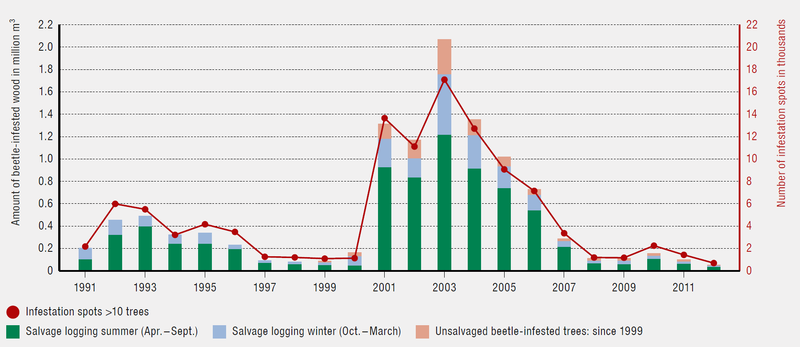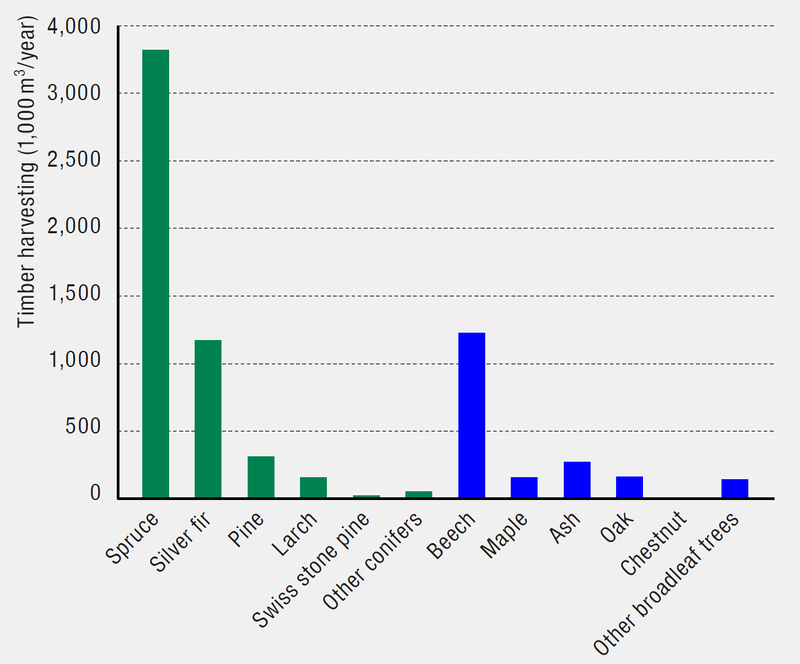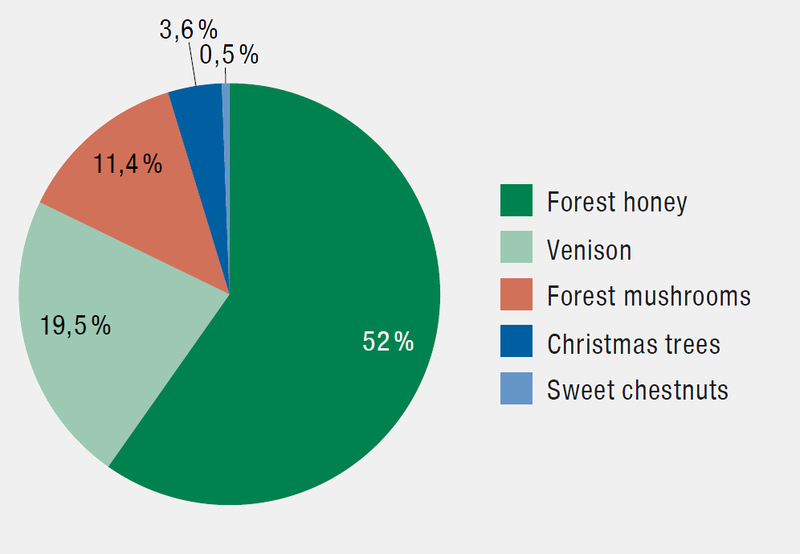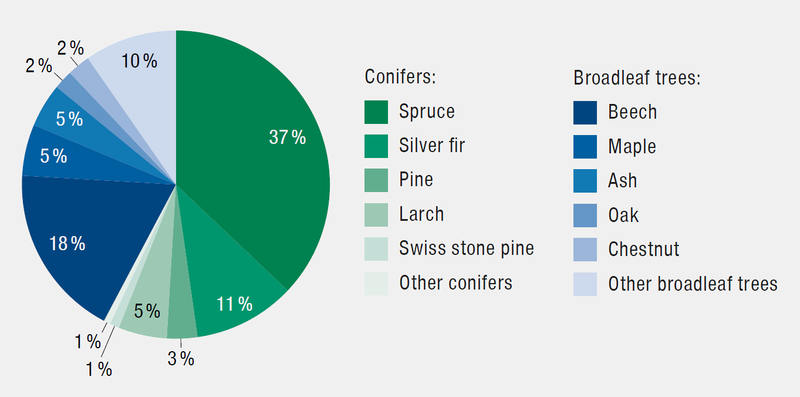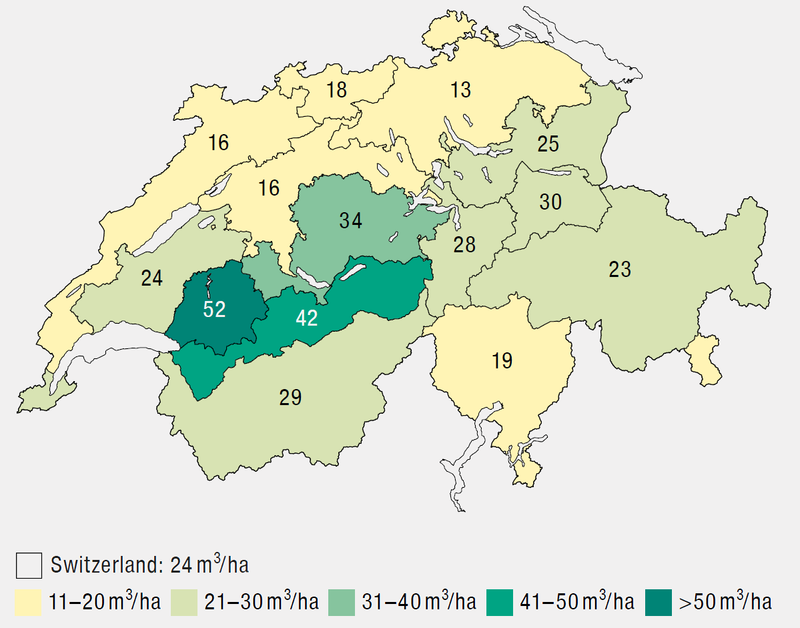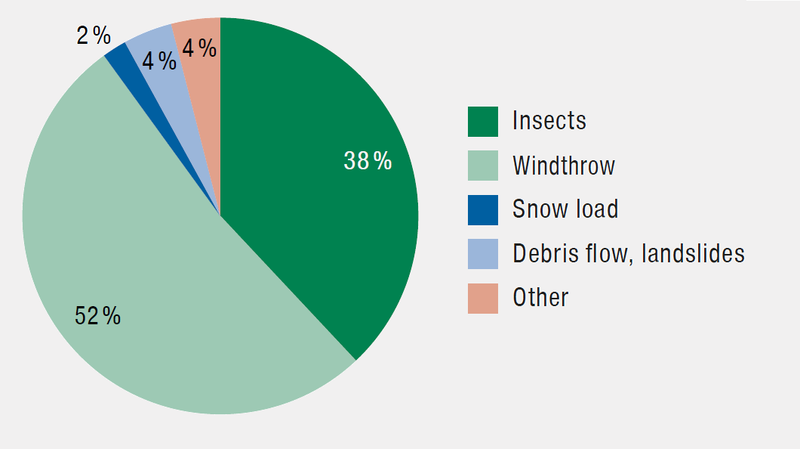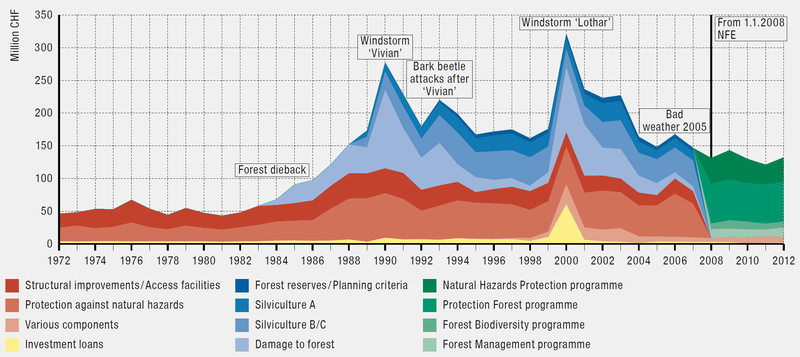How is the forest doing? What functions does it perform? And how sustainable is it? The Forest Report 2015, written by scientific and professional experts, explores these issues. It provides information about the forest in all its facets and describes its development since the last Forest Report in 2005.
Answers differ according to the focus of the question, including whether it is about the condition of the protection forest, the development of biodiversity or how successful forestry has been. On the basis of this report, two general conclusions can be drawn.
- The condition of the forest is never static, as it is continually adapting to changing environmental conditions. Such change is not always easily visible to the human eye, but the Report shows impressively what change is happening, thanks to long-term forest observations.
- The authors consider the condition of Swiss forests, taken as a whole, to be relatively good at the moment. Nevertheless, the changes in the past and the great challenges that are becoming apparent for the future raise the question: will it remain like this for the next 10 years, or are we currently experiencing the quiet before the storm? Some of the challenges we face are already making themselves felt. These include not only climate change, but also harmful and dangerous organisms unknown here up to now. The past also shows that new threats, which we cannot foresee today, may time and again arise.
Data basis
The present Forest Report 2015 investigates how the condition of the Swiss forest has developed since the publication of the Forest Report 2005. Both forest reports are based on the indicators used in Forest Europe. Their results are therefore directly comparable and can be compared with those of international reporting. The results of the indicator measurements enable an assessment of whether the Swiss forest is being used sustainably. Prerequisites for such an assessment are long-term data series about the condition of the forest ecosystem, based on data from comprehensive forest monitoring conducted since the 1980s. Long-term targets must also be defined, and the federal government has accordingly specified such targets in the Forest Policy 2020.
SELECTED RESULTS
1) Resources
The forest in Switzerland covers a third of the country’s surface. The forest area in the Alpine regions has increased continuously for 150 years, and by as much as 7 per cent since the 2005 Forest Report alone. In many places stands have become denser. The overall growing stock has increased by a further 3 per cent, although not as much as in the previous period. The growing stock on the Swiss Plateau has, however, decreased, especially that of spruce, which has diminished by almost a third. Since the overall growing stock is greater, the forest serves as a sink for increasing amounts of CO2.
2) Forest Health and Vitality
Since 2005, Swiss forests have been spared disastrous storms. Sulphur deposition from the atmosphere has decreased further. In contrast, high nitrogen deposition and increasing soil acidification still disturb the nutrient balance of trees. Defoliation and tree mortality have remained, on average, stable for many years, but periodically they have increased strongly due to droughts and insect infestations. The rate of unwanted introduction of alien animal, plant and fungal species has continued to increase markedly since 2005. The ongoing climate change will, in future, be even more of a challenge for the forest and forestry.
3) Use
Since the Forest Report 2005, both the wood increment and the growing stock have continually increased, while the amount of harvested wood sold has decreased. During the same period, the harvest of logs and industrial timber has decreased and that of energy wood has increased. In addition to wood, non-wood products such as forest honey, venison or mushrooms can also be obtained in the forest. Of the non-wood products, the sudden drop in sweet chestnuts stands out: the harvest has really caved in as a result of damage caused by the sweet chestnut gall wasp. In Switzerland, the use of the forest is covered in the Forest Act. Forest planning implements this legislation and also ensures the sustainability of all forest functions.
4) Biodiversity
Forests play a central role in maintaining biodiversity in Switzerland. Since the Forest Report 2005, about half of the forest reserves planned for completion by 2030 have already been established, and the populations of forest birds, large carnivores and wild ungulates have grown. Despite these positive developments, some problem points still remain. Thus open forests and late phases of forest development with old trees and deadwood are rare in the lowlands, and the total number of vulnerable species has not decreased.
5) Protection Forest
Forests protect groundwater, an important drinking-water resource, from impurities by retaining pol-lutants in the soil and allowing the cleaned water to percolate deep into the ground. Drinking water from forest areas is therefore of good quality. Forests provide people with protection against natural hazards, like avalanches, rockfall and debris flows. Their protective effect has improved since 2005 because the forests have grown denser. The increasing lack of regeneration and more browsing of young trees by wild ungulates mean, however, that the forest’s long-term protective effect is uncertain.
6) Social Economy
The criterion social economy describes how forestry and the wood industries relate to society. The emphasis here is on the economic and social aspects of sustainable forest management. Since the last Forest Report in 2005, the importance of these aspects and the complex relationships between them have noticeably increased – for example, the way the general public influences forest management. Conflicts over how to use the forest are increasingly the cause and the result. The forest service of wood production and other services such as protection and recreation are increasingly being viewed as related to each other, with wood production re-gaining importance. This development is caused, among other things, by both the energy transition and the generally difficult economic situation of the owners and partners in Swiss forestry.
Download / Order

